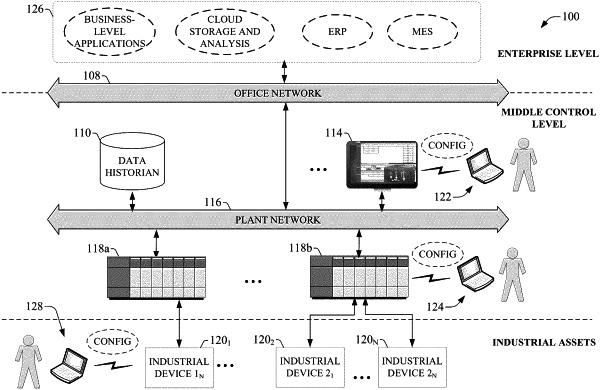| CPC G06F 8/34 (2013.01) [G05B 19/05 (2013.01); G06F 8/33 (2013.01)] | 20 Claims |

|
1. A system for developing industrial applications, comprising:
a memory that stores executable components; and
a processor, operatively coupled to the memory, that executes the executable components, the executable components comprising:
a user interface component configured to render integrated development environment (IDE) interfaces on respective client devices associated with respective end user entities and to receive, via interaction with the IDE interfaces, de sign input that defines control design aspects of respective industrial automation control projects, wherein functionalities of the IDE interfaces are controlled by an IDE editor;
a project generation component configured to generate the respective industrial automation control projects based on the design input; and
an editor definition component configured to receive, from the respective client devices via the interaction with the IDE interfaces, interface definition data that specifies individual customizations of the IDE interfaces, and to instruct the IDE editor to implement the individual customizations of the IDE interfaces,
wherein the IDE editor comprises one or more open application programming interfaces (APIs) that allow the respective client devices to programmatically access a subset of the IDE editor's low-level services and data models to facilitate the individual customizations of the IDE interfaces.
|